Inlaid Bronze Basin, late 13th or early 14th centuries AD, Mamlūk, Victoria and Albert Museum
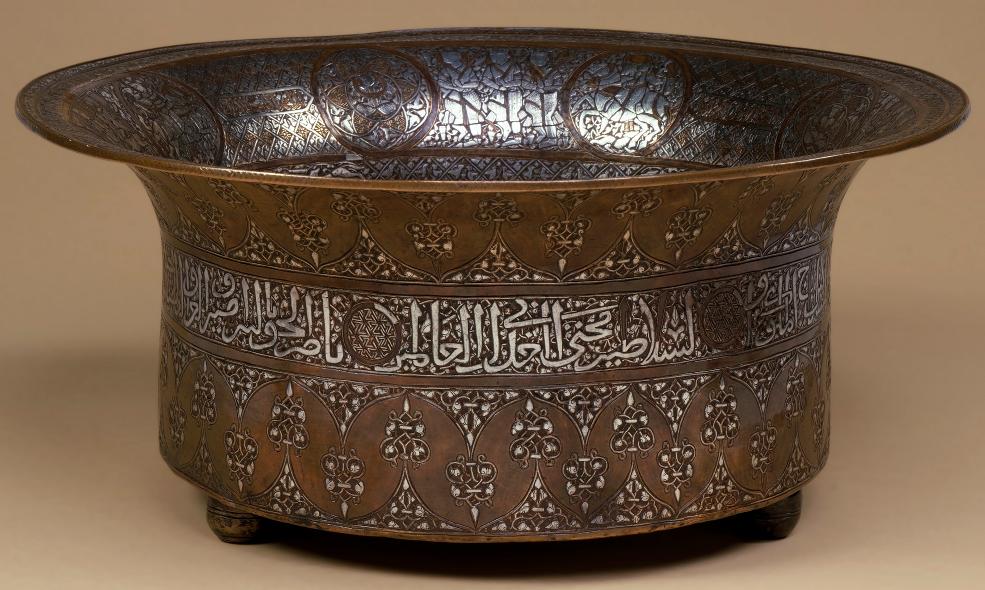
A larger image of this Mamluk Basin, Egypt or Syria, 13th-14th centuries. Victoria and Albert Museum 740-1898.

|
Place of origin: Egypt or Syria Date: 1250-1350 (made) Artist/Maker: Unknown Dimensions: Height: 18.5 cm, Diameter: 42.5 cm rim Materials and Techniques: Brass basin, hammered, inlaid with gold and silver Museum number: 740-1898 Gallery location: Islamic Middle East, room 42, case 16, shelf 2 In the medallions on the rim of this basin, horse riders alternate with figures representing the moon. Between the medallions are groups of marching soldiers and animated inscriptions. The real and fantastical animals include ducks that chase one another in and out of the script. The Arabic inscriptions contain elaborate but anonymous royal titles and good wishes for the owner. This type of secular decoration shows that this basin was a domestic object made for a palace rather than a religious building. It is an example of the distinctive dynastic style that developed during the first century of Mamluk rule in Egypt and Syria (1250–1350). This was when the sultanate was at the height of its power. At first, scenes with human figures were common. These disappeared after 1300, and elegant inscriptions in Arabic became more prominent. The texts all name the patron or glorify the sultan. p34, MAA - 259 - The Mamluks - 1250-1517 by David Nicolle 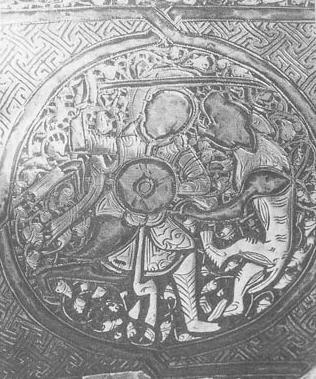 Infantry are not often shown in Mamluk art. This figure on an inlaid bronze basin dating from the late 13th century still carries the long sabre of a cavalryman but, in addition to a small shield, has the leg bindings of a foot soldier rather than a dismounted horseman. (V & A Mus., Inv. 740-1898, London, author's photo) p35, MAA - 171 - Saladin and the Saracens by David Nicolle 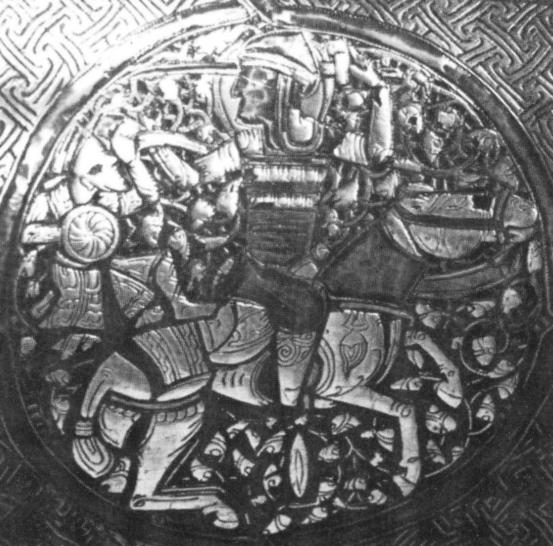 Armoured cavalryman on a late 13th-early 14th-century Mamluk inlaid bronze basin, wearing a short lamellar cuirass. (Victoria and Albert Mus., London) p37, MAA - 259 - David Nicolle - The Mamluks 1250-1517 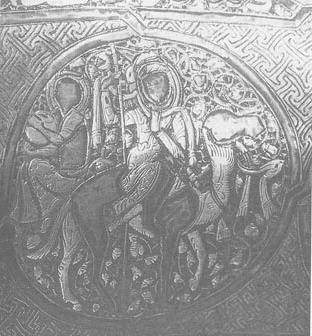 Another figure on an inlaid bronze basin in the Victoria and Albert Museum shows a bedouin Arab warrior, perhaps an auxiliary, with the Arab's typically long spear. To the left a lady plays a tambourine; Bedouin women having encouraged their menfolk on the battlefield since pre-Islamic times. (V & A Mus,. Inv. 740-1898, London, author's photo) 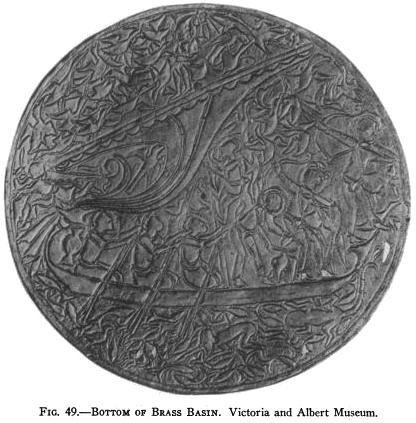 Figure 49 in G. D. Guest and R. Ettinghausen, "The Iconography of a Kāshān Luster Plate," Ars Orientalis 4, 1961, pp. 25-64. |
Referenced as figure 177 in The military technology of classical Islam by D Nicolle 177A to 177G. Inlaid bronze bowl, late 13th or early 14th centuries AD, Mamlūk, Victoria and Albert Museum no.740.1898, London.  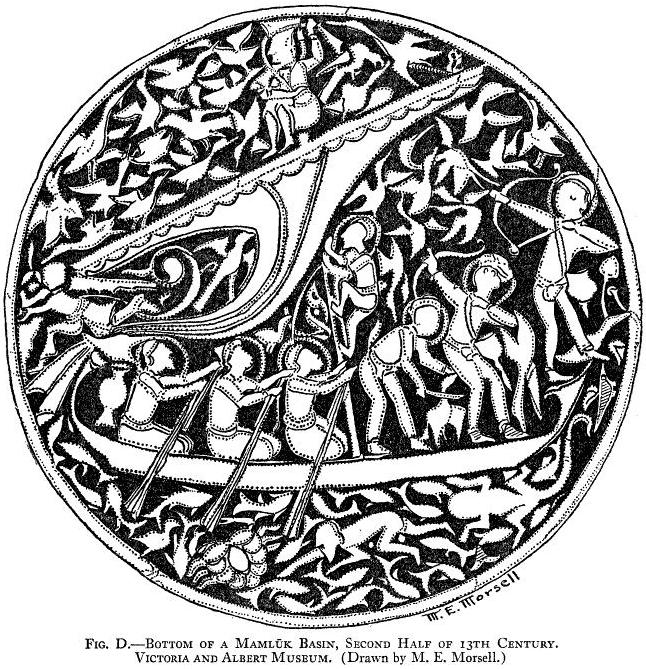 Figure D, p46, in G. D. Guest and R. Ettinghausen, "The Iconography of a Kāshān Luster Plate," Ars Orientalis 4, 1961, pp. 25-64. Archers with bags rather than quivers are probably using a pellet-bow. See "Arrow-guides, Pellet-bows and Crossbows", an extract from The military technology of classical Islam by David Nicolle |
See also an Ayyubid inlaid metal basin, 1247-1249AD, Freer Gallery of Art (d'Arenberg Basin)
Ayyubid or Mamluk inlaid metal basin, 13th century AD, Staatliche Museen, Berlin
Illustrations of Egyptian Costume & Soldiers
13th Century Illustrations of Costume & Soldiers
14th Century Illustrations of Costume & Soldiers
